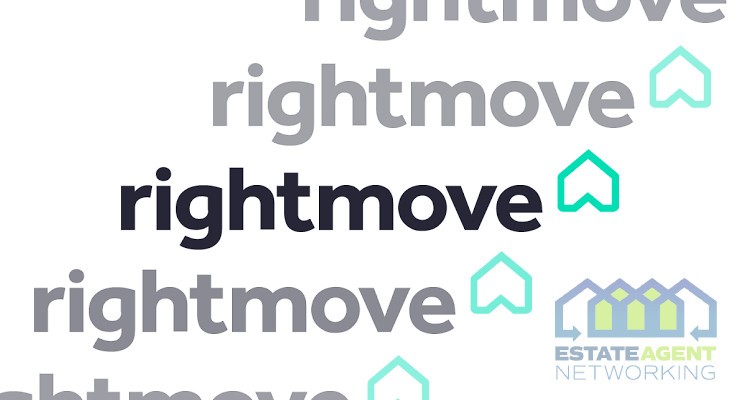How to Cut Your Energy Bills and Boost Your Real Estate Profits
Are you a real estate business owner who wants to save money and energy? If so, you are not alone. According to a report by the UK Green Building Council, the UK real estate sector consumes about 40% of the total energy and emits about 33% of the total carbon dioxide in the country. This means that there is a huge potential for energy savings and emissions reductions in this sector.
Saving energy can benefit your real estate business in many ways. It can help you lower your operating costs, increase your property value, improve your tenant satisfaction, enhance your reputation, and comply with environmental regulations. In this guide, we will show you how to cut your energy bills and boost your real estate profits by following some simple and effective tips.
Assess Your Current Energy Performance
The first step to saving energy is to assess your current energy performance. This means measuring how much energy your business uses and how efficient it is. You can do this by conducting an energy audit or using online tools.
An energy audit is a process of inspecting, testing, and analysing your energy usage and efficiency. You can hire a professional auditor or do it yourself using guides and checklists. An energy audit can help you identify the areas where you are wasting energy and the opportunities to improve your efficiency.
Online tools are software applications that allow you to monitor and analyse your energy consumption and performance. You can use online tools such as Carbon Trust’s SME Carbon Footprint Calculator or Energy Saving Trust’s Business Energy Check to get an estimate of your energy usage, costs, and carbon footprint. You can also use online tools such as British Business Energy’s Energy Comparison Tool or uSwitch’s Business Energy Comparison Service to compare and switch energy suppliers and tariffs.
Switch to Renewable Energy Sources
The second step to saving energy is to switch to renewable energy sources. Renewable energy sources are natural resources that can be replenished and do not produce harmful emissions. Some examples of renewable energy sources are solar panels, wind turbines, hydroelectric power, biomass, geothermal, etc.
Switching to renewable energy sources can help you reduce your carbon footprint and your energy bills. You can either buy green electricity from your supplier or install your own renewable energy system.
Buying green electricity from your supplier means choosing a tariff or a supplier that provides electricity from renewable sources or offsets the emissions from fossil fuels. Some suppliers may offer incentives or discounts for switching to green electricity. You can use online tools such as Green Electricity Marketplace or Big Clean Switch to find and compare green electricity suppliers and tariffs.
Installing your own renewable energy system means generating your own electricity from renewable sources such as solar panels or wind turbines. This can help you reduce your dependence on the grid and save money on your electricity bills. You may also be eligible for government schemes such as Feed-in Tariffs (FITs) or Smart Export Guarantee (SEG) that pay you for the electricity you generate or export. You can use online tools such as Solar Calculator or Wind Calculator to estimate the costs and benefits of installing solar panels or wind turbines.
Upgrade Your Equipment and Appliances
The third step to saving energy is to upgrade your equipment and appliances. Equipment and appliances are devices that use electricity or gas to perform various functions such as heating, cooling, lighting, computing, etc. If you are using outdated or inefficient equipment and appliances, you may be wasting a lot of energy and money.
Upgrading your equipment and appliances means replacing them with more energy-efficient models or brands that have the Energy Star label or the EU energy label. These labels indicate that the products meet certain standards of energy performance and environmental impact. By upgrading your equipment and appliances, you can save up to 30% on your energy costs.
Some examples of equipment and appliances that you can upgrade are:
– Heating and cooling systems: You can upgrade to more efficient boilers, heat pumps, air conditioners, etc. that have high Seasonal Energy Efficiency Ratio (SEER) or Coefficient of Performance (COP) ratings.
– Lighting systems: You can upgrade to more efficient LED bulbs, lamps, fixtures, etc. that have low wattage and high luminous efficacy ratings.
– Computing systems: You can upgrade to more efficient laptops, desktops, monitors, printers, etc. that have low power consumption and high performance ratings.
– Refrigeration systems: You can upgrade to more efficient fridges, freezers, coolers, etc. that have low energy consumption and high cooling capacity ratings.
Use Smart Devices and Software
The fourth step to saving energy is to use smart devices and software. Smart devices and software are devices and applications that use internet connectivity and artificial intelligence to monitor and control your energy usage remotely. They can help you optimize your energy efficiency and performance.
Some examples of smart devices and software that you can use are:
– Smart thermostats: These are devices that allow you to adjust the temperature of your heating and cooling systems from your smartphone or tablet. They can also learn your preferences and habits and adjust the temperature automatically to save energy.
– Smart plugs: These are devices that allow you to turn on and off your appliances from your smartphone or tablet. They can also monitor your energy consumption and schedule your appliances to run at off-peak times to save money.
– Smart lights: These are devices that allow you to dim, change, or turn off your lights from your smartphone or tablet. They can also sense motion, daylight, or occupancy and adjust the brightness accordingly to save energy.
– Smart sensors: These are devices that detect various environmental factors such as temperature, humidity, air quality, etc. and send alerts or feedback to your smartphone or tablet. They can also communicate with other smart devices and adjust the settings to improve your comfort and efficiency.
– Software tools and apps: These are applications that allow you to track, analyse, and manage your energy consumption and performance from your smartphone or tablet. They can also provide you with tips, recommendations, and goals to help you save more energy.
Educate and Motivate Your Employees
The fifth step to saving energy is to educate and motivate your employees. Your employees are an important part of your energy-saving strategy. They can help you implement the measures and practices that you have adopted to save energy. They can also contribute their own ideas and suggestions to improve your energy efficiency and performance.
Educating and motivating your employees means informing them about the benefits of saving energy and the best practices to follow in your office. It also means involving them in your energy-saving efforts by creating a green culture, setting targets, rewarding achievements, and providing feedback.
Some examples of ways to educate and motivate your employees are:
– Creating a green team: This is a group of employees who are responsible for leading and coordinating the energy-saving initiatives in your office. They can also act as role models and mentors for other employees.
– Providing training and resources: This means providing your employees with training sessions, workshops, webinars, guides, posters, etc. that teach them about the importance of saving energy and the ways to do it.
– Setting targets and monitoring progress: This means setting realistic and measurable goals for your energy consumption and performance and tracking them regularly. You can use online tools such as Carbon Trust’s SME Carbon Management Tool or Energy Saving Trust’s Business Energy Tracker to measure and report your energy savings.
– Rewarding achievements and providing feedback: This means recognising and rewarding your employees for their energy-saving efforts and achievements. You can use incentives such as bonuses, prizes, certificates, etc. You can also provide feedback on their performance and areas for improvement.
Wrapping Up
Saving energy is not only good for the environment, but also for your real estate business. It can help you cut your energy bills and boost your real estate profits by reducing your operating costs, increasing your property value, improving your tenant satisfaction, enhancing your reputation, and complying with environmental regulations.
In this guide, we have shown you how to save energy by following five simple and effective steps:
– Assessing your current energy performance
– Switching to renewable energy sources
– Upgrading your equipment and appliances
– Using smart devices and software
– Educating and motivating your employees
We hope this guide has helped you learn how to save energy as a real estate business owner. If you need more assistance or information, please visit britishbusinessenergy.co.uk for more information on energy comparison solutions.






